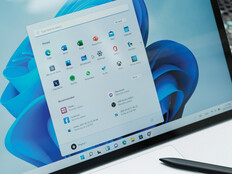Adapt These Settings for a Faster Windows 10
When Microsoft launched Windows 10 in 2015, the company set a goal of hitting 1 billion installed devices within three years.
Two years later, 500 million devices were running Windows 10. That’s a little behind Microsoft’s aggressive target, but half a billion installed devices is a tremendous footprint. Now that we’re approaching the January 2020 end-of-life deadline for Windows 7, Windows 10 will continue to gain steam in higher education and beyond.
As it does, IT professionals can take a few simple steps to tweak performance and improve the user experience. Windows 10 includes new features that provide better power management and troubleshooting. Those tools, combined with some traditional Windows techniques, can dramatically improve the end-user experience and stretch limited IT budget dollars by extending the usable life of endpoint hardware.
Activate Battery Saver Mode to Conserve Power
There’s nothing more frustrating to an end user than having a device’s battery run out with no power outlet in sight. Windows 10’s Battery Saver function boosts battery life by activating a set of power conservation mechanisms automatically when battery life drops below 10 percent, including dimming the display and throttling background apps.
Don’t wait until the battery is depleted to activate this mode. Just click the battery icon in the task bar and use the Windows 10 slider bar to choose the proper balance between performance and battery life.
MORE FROM EDTECH: Keep Windows 10 campus devices up to date with these notable best practices.
Disable Startup Programs to Optimize Performance
Over time, Windows systems often become cluttered with outdated or unnecessary startup programs installed by administrators and end users. Each consumes valuable system resources and contributes to performance declines. Good system hygiene includes periodically purging those programs to keep things humming along nicely.
Windows 10 makes such maintenance easy. Open Task Manager (Ctrl-Shift-Esc), then choose More Details and the Startup tab. Task Manager will then present a list of programs and their impact on performance. Disable any unnecessary programs by right-clicking on them and choosing Disable from the pop-up menu.
MORE FROM EDTECH: Check out the answers to these 5 common questions about switching to Windows 10.
Maintain Anti-Virus Software for Security
Malware causes significant instances of performance issues. From spyware that monitors user activity to botnets that steal CPU cycles to mine for bitcoin or send out spam, viral infections can wreak havoc on any system. As dangerous as they may be, the only symptom noticeable to users might be slow performance as CPU and memory are hijacked.
Make sure that every Windows 10 system on the network has anti-virus software installed and receives current signature updates. New malware appears on the internet every hour, and any system with outdated signatures is asking for trouble.
Tap into Troubleshooters to Address Windows 10 Issues
For those experiencing specific problems with the performance of a Windows 10 system, Microsoft provides a wide variety of troubleshooting tools that can help diagnose those issues. Tools correct problems with wireless networking, hardware devices, power consumption, software compatibility and more.
Access the Windows 10 troubleshooters by opening the Control Panel and choosing the Troubleshooting option. Click the View All link on the left side of the window to see a complete list of the troubleshooting tools available. Choose the one that best matches the symptoms and Microsoft will provide guidance through the resolution process.









